Contents
- Crop Cultivation
- Agricultural Communities
- Types of Farming
- Rice Farming
- Mahua Collection
- Traditional Agricultural Practices
- Land Leasing
- Use of Technology & Institutional Infrastructure
- Awareness about Schemes
- Market Structure: APMC (as of September 2024)
- List of APMC markets(as of September 2024)
- Farmers Issues
- Impact of Changing Climate & Environmental Conditions
- Droughts, Barren Lands, and Debt: A Tragic Cycle
- Graphs
- Irrigation
- A. No. of Projects
- B. No. of Ponds/Vilage Lakes and Storage Dams
- C. Irrigation Beneficiary Area vs Irrigated Area
- D. Share of Beneficiary Area Irrigated
- E. Tubewells and Pumps Installed In The Year
- F. Irrigation and Water Pumping Facilities
- Cropping Metrics
- A. Share in Total Holdings
- B. Cultivated Area (With Components)
- C. Gross Cropped Area (Irrigated + Unirrigated)
- D. Share of Cropped Area Irrigated
- E. Distribution of Chemical Fertilizers
- Land Use and Credit
- A. Area of Agricultural Land Holdings (With Size Group)
- B. Size Groups' Share in Total Agricultural Land Holdings Area
- C. No. of Agricultural Land Holdings (With Size Group)
- D. Size Groups' Share in Total No. of Agricultural Land Holdings
- E. Agricultural Lending
- F. Agricultural Credit as a share of Total Credit
- Sources
GONDIA
Agriculture
Last updated on 6 November 2025. Help us improve the information on this page by clicking on suggest edits or writing to us.
Gondia district, located in the eastern part of the Vidarbha region of Maharashtra and falling under the Nagpur division, is known for its dense forests and its important role in the state’s agricultural production. Often referred to as the “Rice City,” Gondia owes this title to its fertile soil and favourable climatic conditions, which make it one of Maharashtra’s leading rice-producing districts. Agriculture and the region’s natural resources continue to shape Gondia’s identity and local economy.
Crop Cultivation
Paddy is the dominant crop in Gondia and is cultivated extensively across blocks such as Morgaon Arjuni, Goregaon, Amgaon, Sadak Arjuni, and Tiroda. The district is known for producing high-quality rice, including varieties suitable for export. Farmers typically grow two paddy crops each year: one during the Kharif season (monsoon) and a second in the summer. Local rice mills add value by processing the harvested grain and supporting the local economy.
The main paddy varieties grown include long-duration types such as Jai Shri Ram, HMT, and Kesar, as well as popular shorter-duration varieties like Sona Masuri, MTU-1010, MTU-1001, and IR 64. Reliable irrigation in key blocks has enabled the cultivation of these high-yielding varieties.
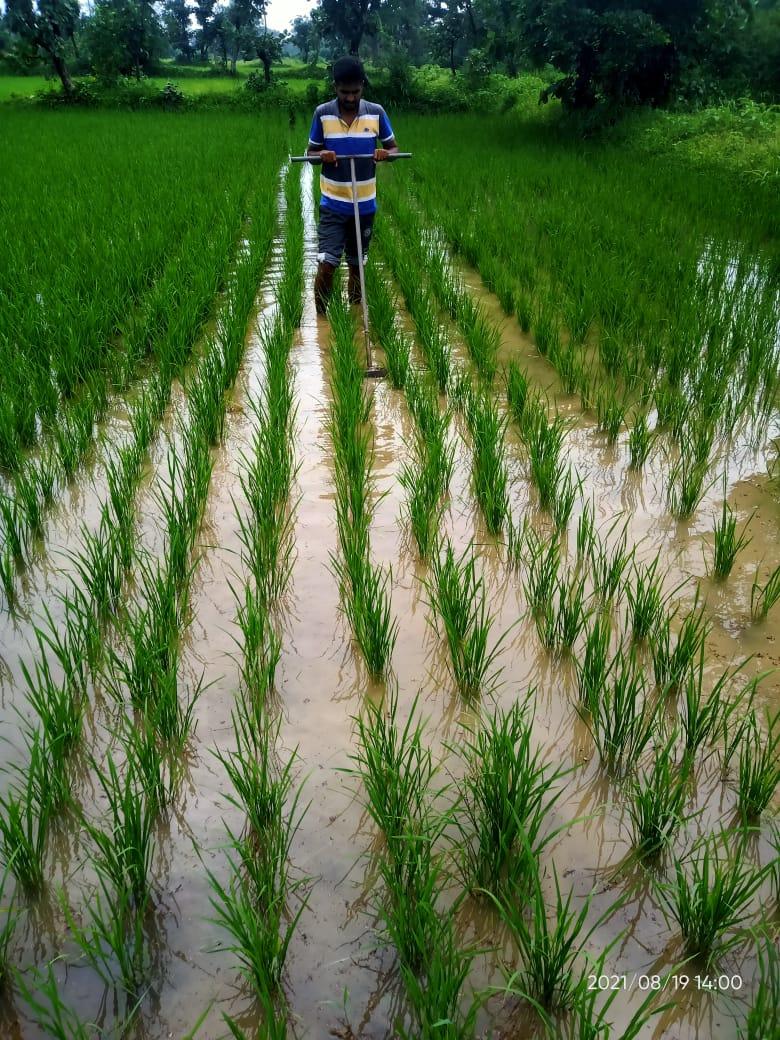
Traditionally, farmers also grew red gram (tur) alongside rice during the Kharif season. Typical Rabi crops included gram, wheat, linseed, Lathyrus (Lakhori), and various pulses. Over time, cultivation of traditional crops like linseed, Kodo millet, sorghum, and Lakhori has reduced as many farmers have shifted to more profitable crops due to changing market demands.
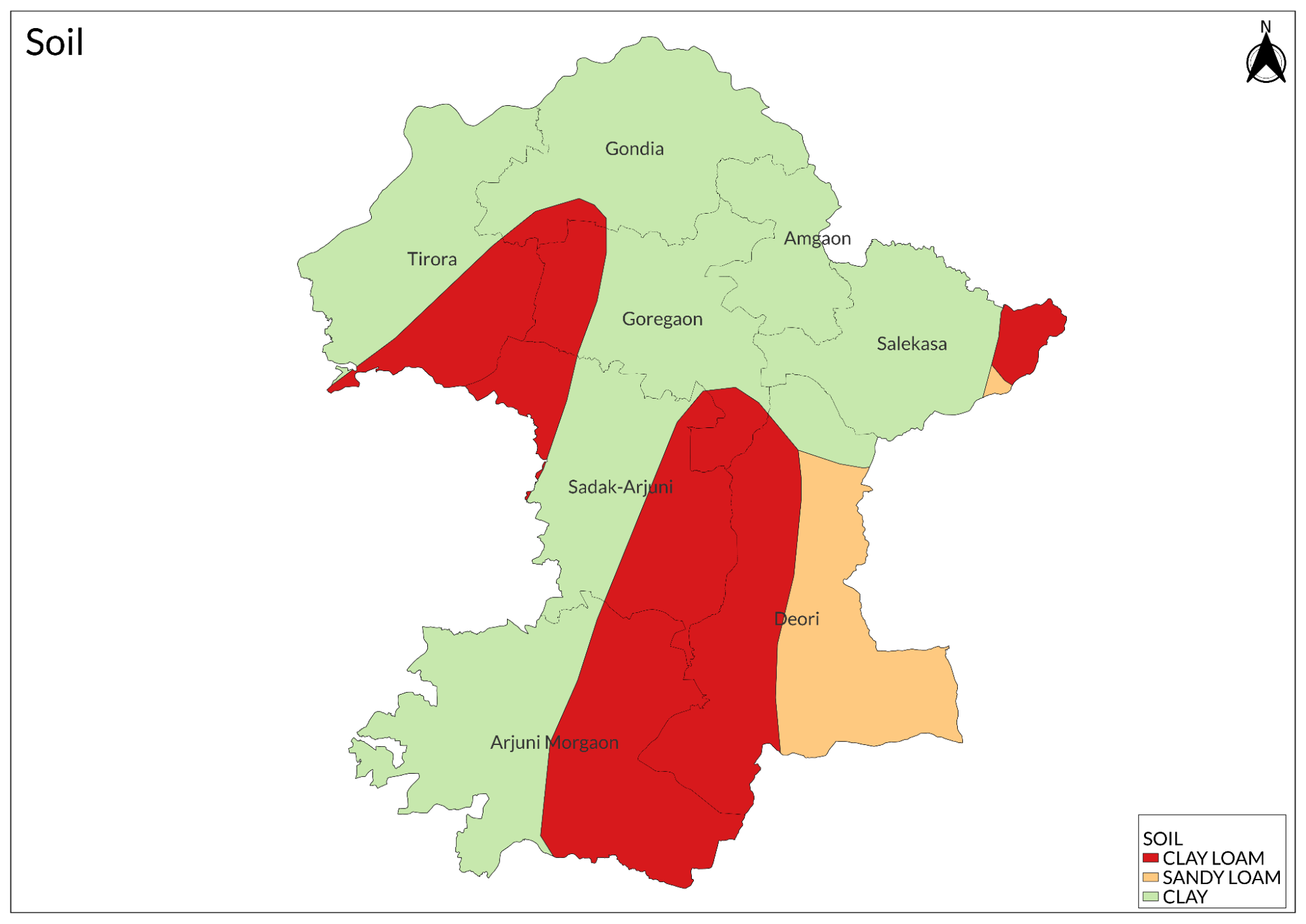
With the introduction of improved seeds and better irrigation, farmers in Gondia have increasingly diversified towards cash crops such as sunflower and sugarcane. Horticulture is also gaining ground, with the district’s climate well-suited for growing mango, guava, custard apple, jackfruit, lemon, ber, and sapota (chikoo). According to NABARD, conditions also favour flower cultivation, varieties such as mahua, rose, mogra, and marigold are grown, especially under greenhouse conditions.
Farmers have also adopted improved vegetable varieties and vegetables and pulses remain important supplementary crops in the district’s farming system.

Agricultural Communities
Gondia district is primarily agrarian, with agriculture forming the backbone of the local economy and social structure. A large share of the population is engaged in cultivation and allied activities.
Agricultural labourers, both men and women, play a central role in the district’s farming system. Many rely on seasonal work, often migrating to other areas during the lean agricultural months when local demand for labour falls. This dependence on seasonal employment means that agricultural workers face irregular incomes, low wages, and limited job security. Daily wages for farm work are generally lower than those available in nearby urban centres, which further contributes to economic vulnerability.

Among Gondia’s farming population, the Gonds remain one of the most significant indigenous communities, with a long history of shaping the cultural and social landscape of the district. Today, the Gonds are divided into four main endogamous groups: Raj-Gonds, Madia, Dhurve, and Khatulwar Gonds. For these communities, the mahua tree is of special importance, providing flowers that are collected each year both for household use and as a valuable source of supplementary income.
Types of Farming
Rice Farming
Rice cultivation has long been central to Gondia district’s agricultural landscape and identity. Often called the district’s One District, One Product (ODOP), paddy is deeply embedded in the region’s culture and economy. The traditional rhythm of rice farming follows the seasonal cycle, with key phases such as para lavni—the labor-intensive transplantation of rice seedlings into flooded fields—marking the start of the main cropping season.

However, sustaining rice cultivation has become increasingly challenging. Farmers report greater difficulties due to unreliable monsoon rains, groundwater depletion, and the rising costs of fertilisers and pesticides. Maintaining water-intensive paddy fields is proving costly, pushing many smallholders to look for more sustainable and economically viable alternatives.
Mahua Collection
For many of Gondia’s indigenous communities, especially the Gonds — including the Raj-Gonds, Madia, Dhurve, and Khatulwar — the mahua tree (Madhuca longifolia) remains an important part of daily life. The tree’s flowers are collected each year for use as food, cattle fodder, and the preparation of traditional fermented drinks. In forested parts of the district, gathering mahua flowers is an important seasonal activity that adds to farm income and provides households with extra food and cash earnings.
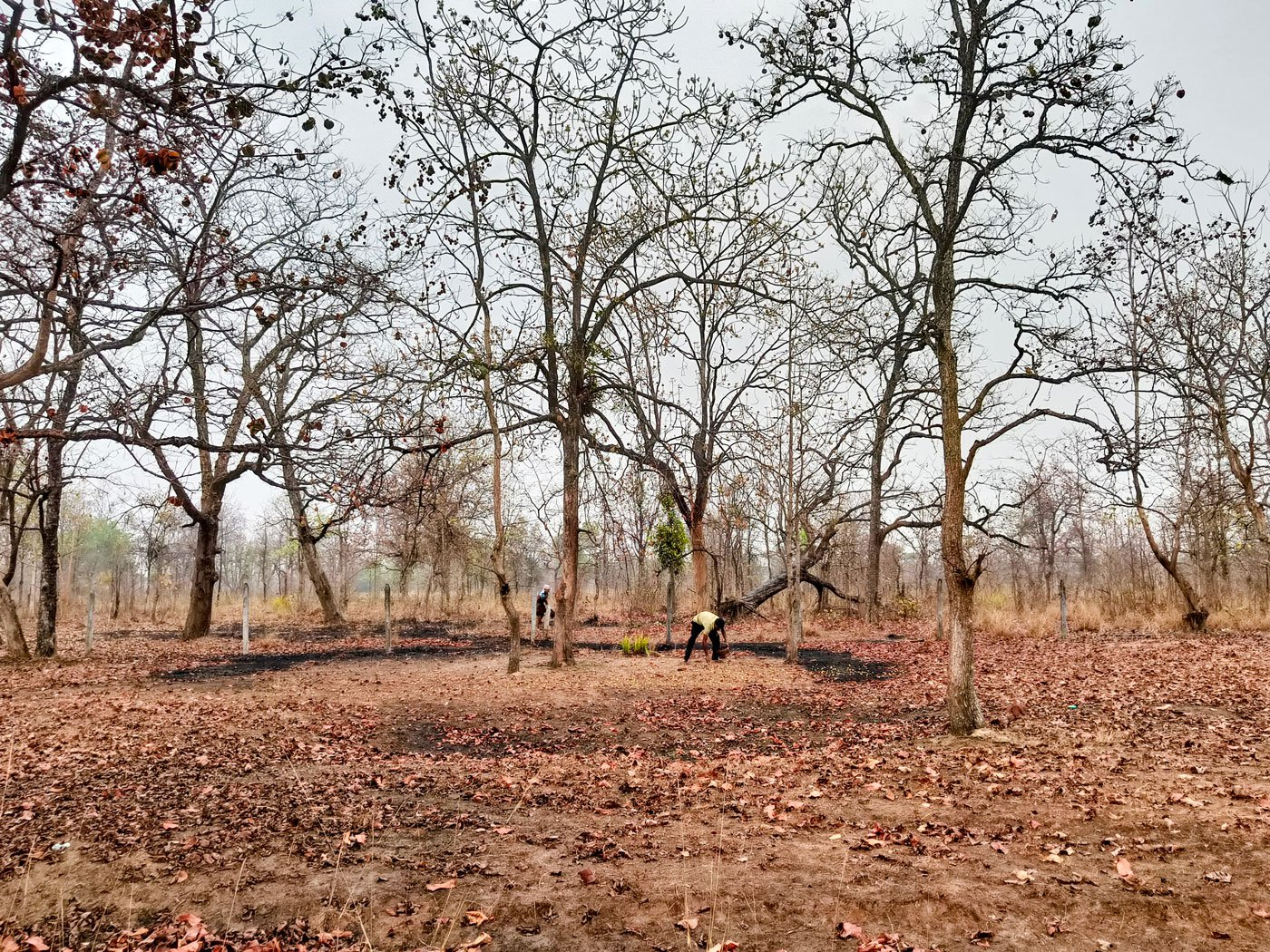
In Gondia, where forests cover over half the district, Mahua flowers are mainly collected during the dry season and supplement household incomes. Collection is labour-intensive and often combined with other seasonal forest-based activities such as gathering tendu leaves or making leaf plates (patrali). However, experts note that the actual mahua harvest remains far below its potential due to the demanding nature of collection work and limited organised markets. The illegal status of mahua liquor production in Maharashtra further restricts local economic returns.
A 2024 PARI (People’s Archive of Rural India) article illustrates these challenges through stories like that of Sarthika Aade, who collects mahua flowers each morning before working under the Mahatma Gandhi National Rural Employment Guarantee Act (MGNREGA) later in the day. Despite long hours, the combined income often remains insufficient for basic needs, highlighting the need for better price stabilisation, local processing, and market access. Experts such as Dr. Hatekar argue that with supportive policies and organised value chains, mahua could become a more reliable source of income for forest-dependent families while preserving cultural traditions.
Traditional Agricultural Practices
Land Leasing
Agriculture in Gondia district continues to rely on farming methods and arrangements shaped by local resources and customs. One of the enduring features of this system is traditional land leasing, which allows landowners to lease out their fields to tenant farmers in return for a share of the harvest or fixed rent instead of direct cash payments. Although contract farming has grown only gradually in the district, informal leasing practices remain widespread.
Common forms include theka (fixed rent), tripach batayi (three-part share), and batayi (sharecropping).
- In theka, a tenant rents land for a set period, usually a season or year, paying a fixed sum agreed in advance. While this arrangement provides the landowner with predictable income, the entire risk of crop failure or price fluctuation falls on the tenant.
- Under tripach batayi, the harvest is divided into three parts: one-third each for the landowner and tenant, and the remaining third covers input costs and labour expenses. This method distributes some responsibility between both parties but requires careful record-keeping and often depends on mutual trust to avoid disputes.
- Batayi, or sharecropping, usually involves an equal split (often 50:50) of the produce between landowner and tenant, with both sharing risks and rewards. This system incentivises tenants to work for higher yields, but it can lead to disagreements if there is lack of clarity over input sharing or labour quality.
Use of Technology & Institutional Infrastructure
Farmers in Gondia have increasingly adopted modern agricultural machinery to improve efficiency and reduce manual labour. Equipment such as tractors for ploughing and puddling, as well as Rice Transplanting (RTP) machines, have become more common, helping farmers transplant rice seedlings faster and with less effort.
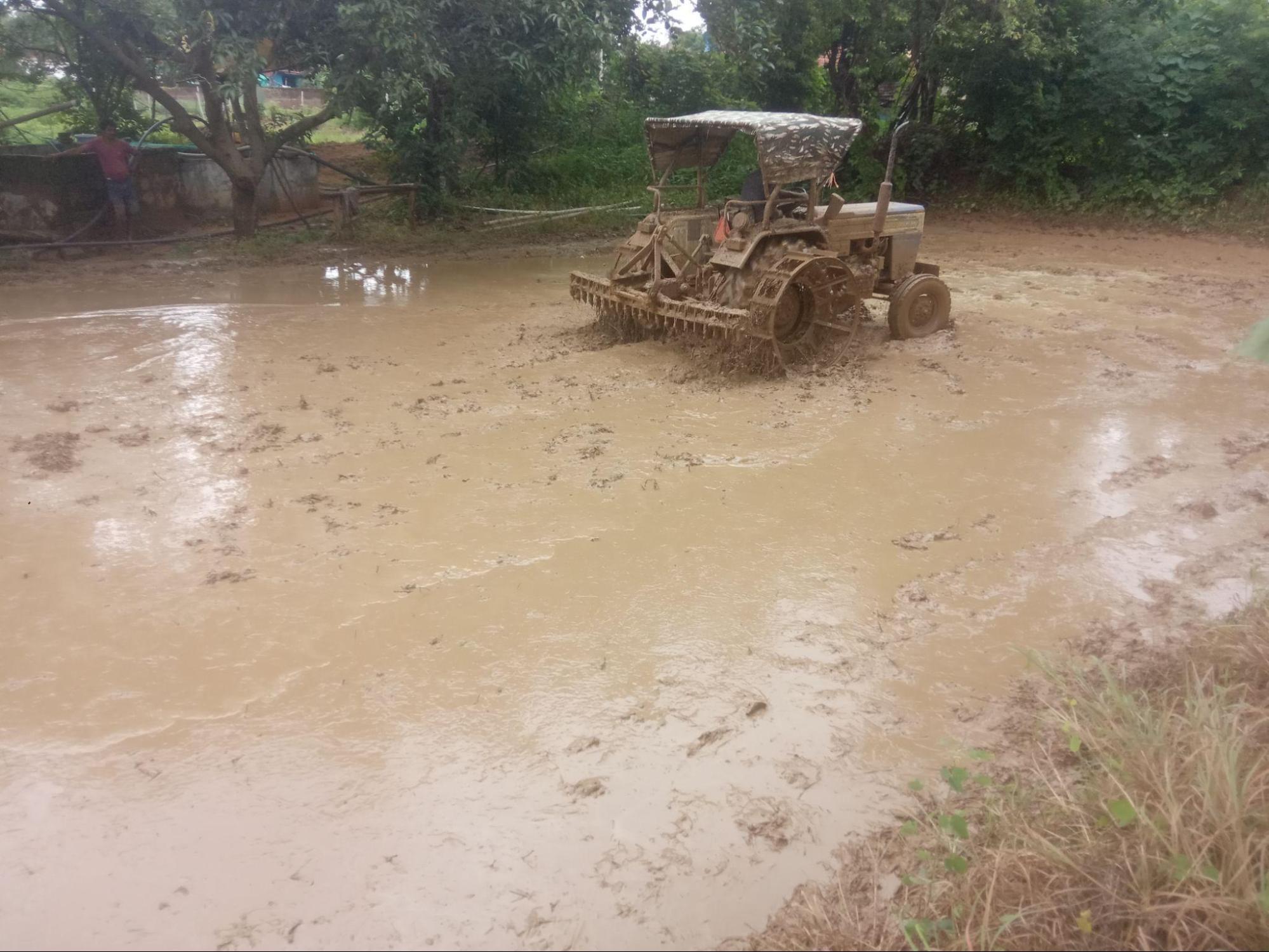
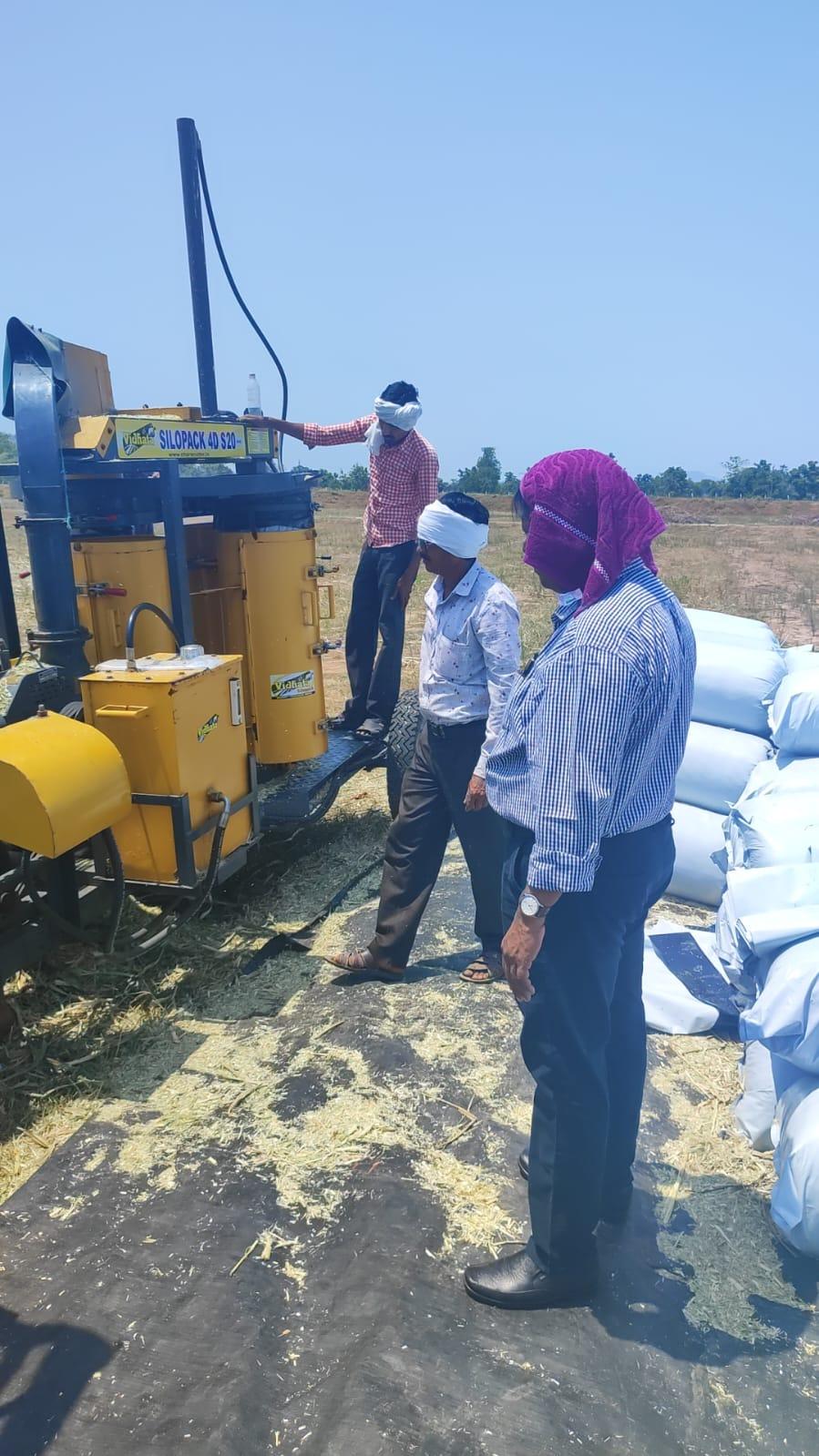
However, many small and marginal farmers, especially those from indigenous communities, still prefer traditional methods. In these areas, bullock pairs are commonly used for ploughing and related work, as they remain affordable and fit well with long-standing farming practices.
Awareness about Schemes
Awareness of government schemes among farmers in Gondia varies greatly. Farmers with larger landholdings or higher education levels are often better informed, while smallholders and farmers from indigenous communities may have less access to timely information. To address this, the Tribal Welfare Department and the Department of Agriculture run outreach programs to increase awareness and reach remote farming communities.
Farmer Producer Organizations (FPOs) have emerged as another way to improve market access and support smallholders. One notable organization in this regard is the Krushi Unnati Farmer Producer Company Limited in Kakodi village which was formed by the local farmers of Gondia. Originally formed as the Manav Bachat Gat Self-Help Group in 2007, the collective transitioned into a registered FPO in 2018 with assistance from the Agricultural Technology Management Agency (ATMA). Its objective is to help local farmers—particularly those from indigenous communities—improve productivity, add value to their produce, and strengthen their market position.

The transformation from a Self-Help Group (SHG) to an FPC was not without its challenges. The farmers initially faced inefficiencies in the project implementation process, which caused significant delays. To mitigate the risks, the farmers decided to invest their resources in a cleaning and grading unit, increasing the capacity and costs of the project. Despite these setbacks, the project was completed in 2018.
The involvement of the Agriculture Technology Management Agency (ATMA) also played a crucial role in the formation of Krushiunnati. In 2014, ATMA recognized the potential of Manav Bachat Gat to evolve into a full-fledged FPC. With the right support, this transition would help increase farm productivity, improve market access, and, most importantly, enhance the socio-economic conditions of farmers belonging to indigenous communities in the region.

The transition from an SHG to a full-fledged FPO was not without challenges. Initial delays occurred due to administrative hurdles during project implementation under the Maharashtra Agricultural Competitiveness Project (MACP). To keep the initiative moving, members contributed their own funds to build a two-ton-per-hour cleaning and grading unit to process local produce, despite the added costs.
As of 2024, Krushi Unnati has about 626 members and manages three Krishi Kendra outlets. These serve farmers in 25 Gram Panchayats. The FPO continues to provide basic processing and marketing services for its members. It has plans to expand its activities, including adding mushroom cultivation and bamboo crafts.
Market Structure: APMC (as of September 2024)
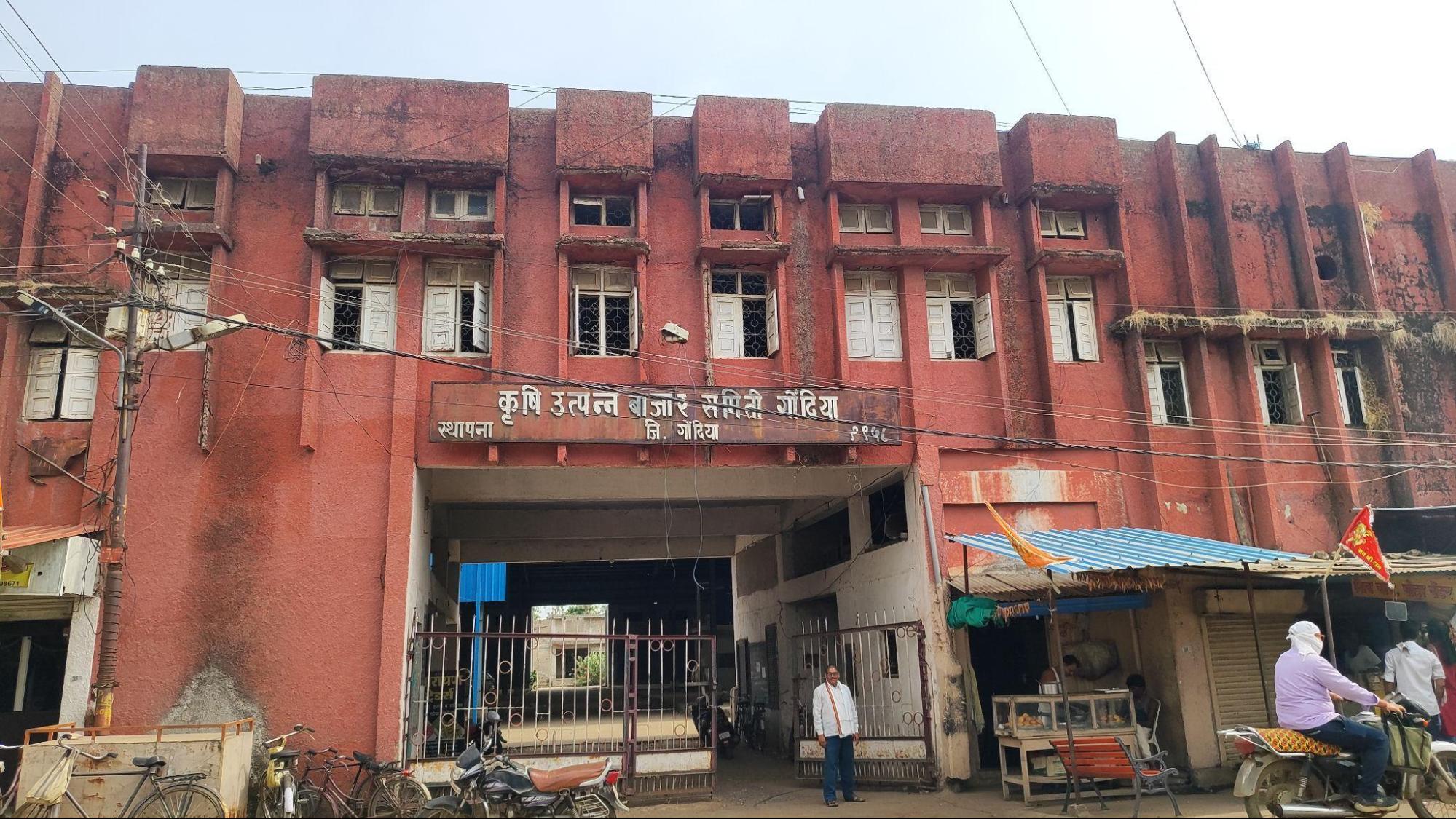
List of APMC markets(as of September 2024)
|
Sr. No |
Name |
Est. Year |
Chairman |
No. of Godowns |
|
1 |
Tiroda |
1961 |
Jitendra Tejram Rahangadale |
1 |
|
2 |
Sadak Arjuni |
1999 |
Avinash Ramkrusha Kashiwal |
NA |
|
3 |
Goregaon |
1991 |
Giradheri Madhorao Baghele |
3 |
|
4 |
Gondia |
1958 |
Chunnilal Nandlal Bendre |
NA |
|
5 |
Devari |
2013 |
Ramesh Narayan Taram |
1 |
|
6 |
Arjuni Margaon |
1977 |
Yeshwant Shamrao Parshuramkar |
14 |
|
7 |
Aamgaon |
1964 |
Keshavrao Laxmanrao Mankar |
5 |
Experiences with Agricultural Produce Market Committees (APMCs) in Gondia district vary among farmers. For many, APMCs provide designated spaces and basic infrastructure to sell crops, including vegetables, which helps maintain freshness and quality. This organised setup gives farmers access to buyers and market facilities in one place.
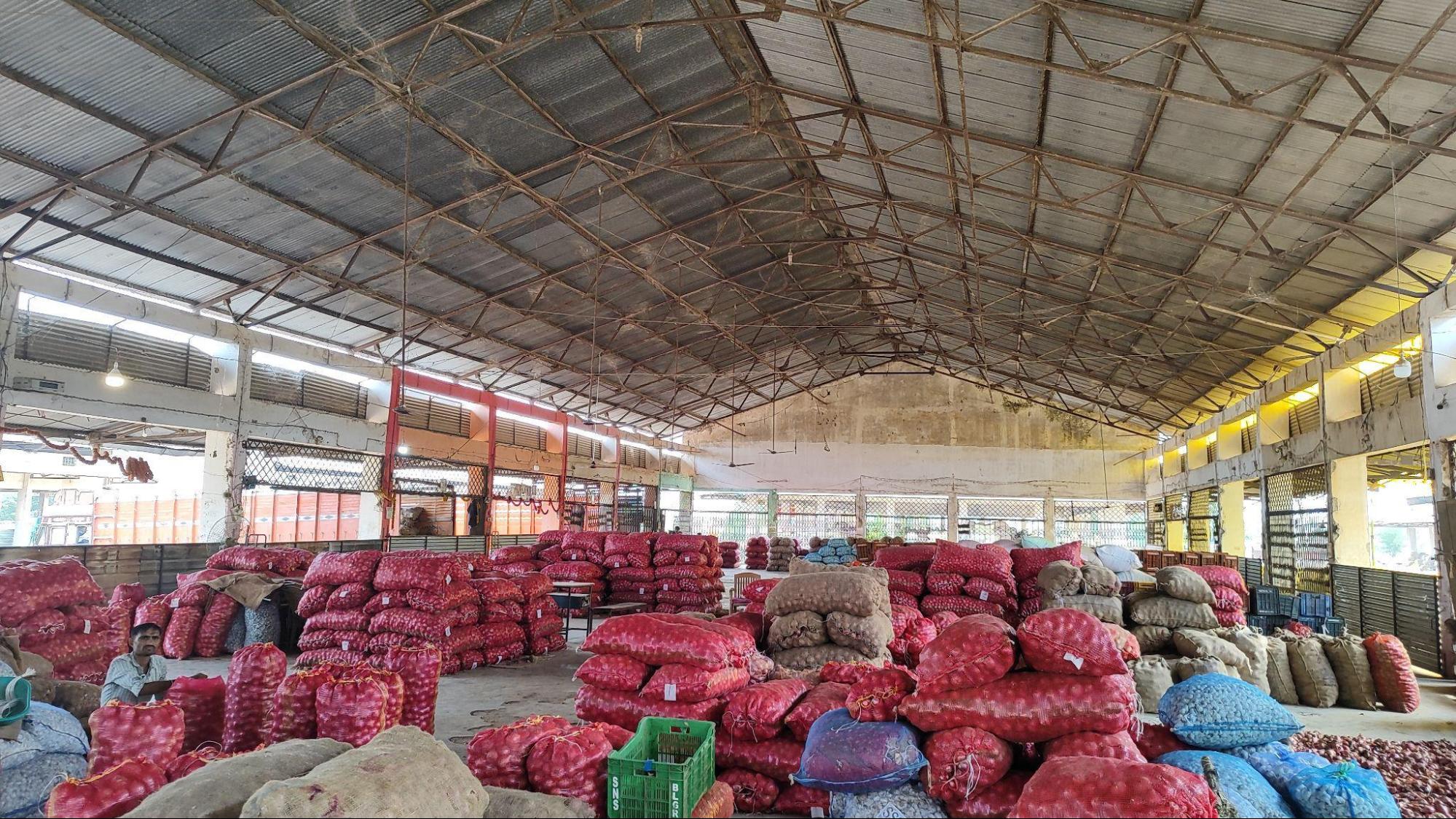
Some farmers value APMCs for providing price regulation and believe they help ensure fair and stable returns for produce. At the same time, recent changes allowing online registration and direct sales have given farmers more options beyond traditional market yards. Many now explore selling directly to buyers outside the APMC system, which some see as more flexible.
Cooperative societies also play an important role in Gondia’s agricultural market, especially for crops like paddy. Many farmers prefer selling to cooperatives because it reduces their dependence on brokers and makes the sale process more straightforward. Selling through cooperatives often allows farmers to receive the Minimum Support Price (MSP), which is an important factor for many smallholders.
Views about brokers within the APMC system are mixed. Some farmers see brokers as useful intermediaries who help with transactions, while others feel that commissions reduce their earnings. As a result, some choose to sell directly to cooperatives instead, which they regard as a more transparent alternative.
APMCs and cooperative societies continue to function alongside each other in the district. Bazaar samitis manage market yards in specific areas, while cooperatives often handle local procurement and grain purchases, providing farmers with additional avenues to market their produce.

Farmers Issues
Impact of Changing Climate & Environmental Conditions
Gondia lies in the Vidarbha region of Maharashtra which is a region known for its dry conditions. This area shares common climatic characteristics, such as erratic rainfall, prolonged droughts, and temperature fluctuations, which significantly impact agricultural productivity. As local farmers state, these climatic features pose substantial challenges to farming. Consequently, these shifts have far-reaching consequences, affecting not only farming practices and crop yields but also the socio-economic well-being of the local farming community in Gondia.
Changing Cropping Patterns
Local farmers in Gondia express that climate change has caused significant changes in rainfall patterns and the growing seasons of crops. Variations in the timing and intensity of rainfall, such as delayed onset, early cessation, or excess precipitation, have disrupted traditional agricultural practices. Many say that primary crops in the district, like paddy and tur, which rely on a consistent water supply, have been particularly affected by these unpredictable weather patterns. In response to declining yields, some farmers in Gondia have increasingly turned to drought-resistant crop varieties or shifted to alternative crops such as mango, guava, dragon fruit, and apple, which are said to be less reliant on water and better suited to the changing climate. Additionally, intercropping—a method where a few crops are grown alongside the main ones—has become more common as a way to adapt to the changing climate.
However, this shift in cropping patterns comes with its own set of challenges. According to local farmers, many say they face difficulties adapting to new crops, especially in terms of acquiring the necessary expertise and meeting market demand. Yet, this adaptation also highlights the resilience and innovativeness of farmers in the face of adversity.
Droughts, Barren Lands, and Debt: A Tragic Cycle
Despite ongoing efforts, the need for more effective solutions and mitigations remains urgent. In 2018, it was reported that 182 talukas in Maharashtra are drought-prone, with four talukas in Gondia also classified as vulnerable, as highlighted in an article by the Indian Express.
The impact of these droughts on agricultural communities is undeniable, as they are inextricably linked to the local agricultural economy. Droughts, coupled with erratic rainfall, lead to poor crop yields, exacerbating the financial distress already faced by farmers. This economic strain is further worsened by mounting debt, low earnings, and the ever-present uncertainty of crop failure.

As a result, across India, farmers' suicides have become a tragic consequence of these compounded pressures. A 2023 Tarun Bharat report titled "गोंदियात दोन दशकांत 294 शेतकरी आत्महत्या" reveals that at least 294 farmers have taken their own lives in Gondia over the past two decades, with climate-induced agricultural distress also playing a significant role in this tragic outcome. These figures underscore a troubling connection between climate change, financial instability, social stressors, and mental health.
A recent vulnerability study assessing climate exposure across Maharashtra placed Gondia in the “moderate exposure” category. The Socio-economic Vulnerability Index (SeVI) classified 11 districts as highly vulnerable, 14 as moderately vulnerable—including Gondia—and nine as less vulnerable, based on factors such as climate risks, economic sensitivity, and adaptive capacity. Although not among the most exposed districts, Gondia faces significant challenges that continue to affect food security and rural livelihoods.
Graphs
Irrigation
Cropping Metrics
Land Use and Credit
Sources
Adhav, Chaitanya Ashok, Sendhil R, Chandel BS, Bhandari G, Ponnusamy K, and Ram H. 2021. Socio-economic Vulnerability to Climate Change – Index Development and Mapping for Districts in Maharashtra, India. SSRN.https://papers.ssrn.com/sol3/papers.cfm?abst…
Devandra Valavalkar. 2023. Success Story: पारंपारीक तांदूळ शेतीला बगल, गोंदियाच्या मातीत गवती चहा आणि सिट्रोनिलाचा प्रयोग. ABP Live.https://marathi.abplive.com/news/gondia/agri…
Hardikar, Jaideep. 2024. Gondia's Poor Still Bank on 3Ms: Mahua, MNREGA and Migration. People's Archive of Rural India.https://ruralindiaonline.org/en/articles/gon…
Indian Express. 2018. Maharashtra: Devendra Fadnavis Declares 182 Talukas Drought-Prone. The Indian Express.https://indianexpress.com/article/india/maha…
Krishi Vigyan Kendra. District Profile.http://kvkhiwra.pdkv.ac.in/?page_id=304
Maitri Mahaonline. Gondia ODOP.https://maitri.mahaonline.gov.in/HTMLTemplat…
NABARD. 2023-24. Potential Linked Credit Plan: Gondia. Maharashtra Regional Office, Pune.https://www.nabard.org/auth/writereaddata/te…
Tarun Bharat. 2023. गोंदियात दोन दशकांत 294 शेतकरी आत्महत्या. Tarun Bharat.https://www.tarunbharat.net/Encyc/2023/12/21…
जल्हा साांख्ययकी कायालय, गोंदया. 2023. जल्हा सामाणजक व आर्थथक समालोचन. अर्थ व सांख्यिकी संचालनालय, महाराष्ट्र शासन, मुंबई.https://cdn.s3waas.gov.in/s346922a0880a8f11f…
Last updated on 6 November 2025. Help us improve the information on this page by clicking on suggest edits or writing to us.